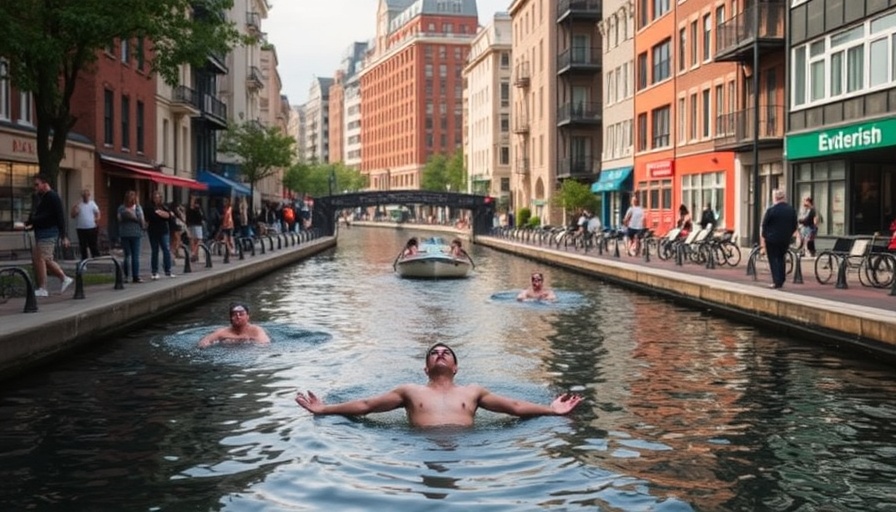
Your Right to Swim: Campaigning for Clean Urban Waterways
As urban populations grow, so does the demand for accessible public spaces, particularly ones that allow for recreation and relaxation. Campaigners advocating for the right to swim in urban waterways emphasize not just the enjoyment of swimming, but also the health benefits and community connections it fosters. At the recent Swimmable Cities summit in Rotterdam, more than 200 activists from over 20 countries gathered to advance this initiative, showing that swimming should be a natural right for all city residents.
Transforming Urban Spaces: From Industrial to Inviting
Rotterdam's Rijnhaven is a shining example of how urban water can be transformed from an industrial zone into a swimmable area. The designation of parts of the Nieuwe Maas as safe for swimming is a testament to what can be achieved when local governments prioritize public health and leisure. This ongoing transformation parallels similar projects worldwide, where cities are revitalizing waterfronts, making them not only aesthetic improvements but also socially and environmentally beneficial spaces.
Success Stories Across Europe: Investing in Urban Waterways
In cities like Paris and Copenhagen, significant investments are being made with the vision of clean urban waterways. Paris has notably invested nearly €1.4 billion for restoring the Seine, aimed for completion in time for the 2024 Olympics, introducing innovative stormwater management and filtration systems. Meanwhile, Copenhagen's approach to real-time water quality monitoring has ensured that its nice harbors now have bustling public swimming zones—a model that many city planners are looking to replicate.
The Global Movement for Swimmable Cities
What started as an initiative in Europe is now gaining traction around the globe. The Swimmable Cities alliance is striving for a worldwide network of safe, swimmable waters in urban environments. Initiatives in places like Berlin's Flussbad project aim to create filtered public swimming pools, proving that achieving clean waterways in cities is not just a dream, but a reachable goal.
Health and Wellness Benefits of Swimming
Swimming has long been lauded for its myriad health benefits—it’s a full-body workout that supports mental health, enhances physical fitness, and provides a sense of community among those who partake. Engaging with urban waterways serves not only as a leisure activity but also contributes to holistic well-being, aligning with popular health and wellness trends. As cities embrace this right, residents not only enjoy sheer fun but also boost their immune systems and mental clarity.
Creating a Community Culture: Swim Together, Stay Together
Events like the Swimmable Cities summit highlight how aquatic spaces can cultivate a sense of community. Swimmers come from different walks of life but are united by the simple joy of swimming. Such gatherings, where discussions about urban improvement happen in swimsuits, break down barriers, creating friendships and fostering social bonds. This is essential in today’s fast-paced world, where connection is increasingly important for emotional well-being.
Take Action Toward Safer Urban Waterways
As campaigners push for more cities to allow swimming in their waterways, it’s crucial for individuals to advocate for and support local initiatives aimed at cleaning rivers and lakes. Engaging with local policymakers and participating in community meetings about urban planning can empower citizens to ensure that their cities embrace the right to swim. It’s not merely about recreational access; it’s about respecting public health and fostering community spirit.
In conclusion, the movement for urban swimming is not just about having fun; it's a path to better health, social engagement, and a cleaner environment. Every action matters, and unified voices can lead to change. To make a difference in your waterfront, get involved with local initiatives or seek out ways to support cleaner waterways in your community.
 Add Element
Add Element  Add Row
Add Row 



Write A Comment